Best science courses to study in the university: After graduating from secondary school it is usually difficult for students to decide which course they want to study in the university. For students in the department of science, this is usually a big problem because most of the science courses are lucrative and prestigious.
On a normal, i usually enjoin students to go for courses which they think is best for them. That is, the course they have passion to study in the university. Apparently, passion is one of the things every student must consider before choosing a course and that is why i always recommend that students should align with what they are passionate about.
That notwithstanding, considering the fact that most students still can’t tell exactly what they have passion for, i thought it wise to share the best science courses any science student can study in the university. In this article, i will comprehensively explain the best science courses to study in the university and why they are the best.
Also read:Most populated universities in Nigeria
In light of the above, i enjoin you to read this article painstakingly as i will quickly list the best science courses to study in the university and explain why you should go for them as a science student.
You can watch the full video of this article above. Here, i gave more details about the courses mentioned in this article. Like and subscribe to Bscholarly TV thank you.
Top 15 Best And Most Popular Science Courses To Study In The World 2024
Below are the best science courses to study in the university:
- Medicine and surgery
- Engineering
- Pharmacy
- Nursing/Nursing science
- Computer Science
- Dentistry
- Microbiology
- Radiography
- Medical Laboratory Science
- Medical rehabilitation
- Agricultural sciences
- Data Management
- Biotechnology
- Architecture
- Surveying
Above are currently the best science courses to study in the university. For detailed information about these courses, continue reading below. Here, I will tell you what each of those courses is about and why they are the best among all the courses available to science students.
Also Read: 7 key Characteristics of human rights
1. Medicine and surgery: Medicine and surgery is undoubtedly the best science course to study in the university. It is apparently the most reputable and one of the most lucrative science courses in the world. Medicine according to Oxford English Dictionary is the science and practice of diagnosing, treating and preventing of diseases.

It pertinent to note that medicine is not only reputable. It is also one of almost competitive courses. That is to say, it is more difficult to gain admission into medical colleges in any institution than any other school. If you really want to become medical doctor, you must be dedicated to your education. It is not enough that you study like every other student. You must read hard because medicine is not an easy course at all.
Note that medicine and surgery has many areas of specialty where a student can decide to enrol in. Below are some of the areas of specialty in Medicine and surgery:
Specialties under surgery:
- Gynecologic Oncology.
- Neurological Surgery.
- Thoracic Surgery.
- Colon and Rectal Surgery.
- Obstetrics and Gynecology.
In addition to what I have said already, I recommend you watch this beautiful video below. It will try to guide you on the best university to study medicine in Nigeria.
RECOMMENDED: Salary structure of medical doctors in Nigeria
2. Pharmaceutical science: Pharmaceutical science is another wonderful course for any student that is interested in the field of science. Pharmacy is simply the science and technique of preparing and dispensing drugs. Just like medicine, pharmacy is lucrative and highly respected as one of the best courses in the field of science.

A graduate of pharmaceutical science can work in the hospital, a pharmacy or with medical agencies of the government. Trust me; gaining employment is not a problem for graduate of the course In most countries. It is indeed one of the best science courses for science students.
If you wish to study pharmaceutical science in the university, make sure you take your time to consider whether it is something you will be able to do or not. Accordingly, consider the ups and downs of studying Pharmaceutical science in your country before deciding to study the course.
Also read: Top 10 Richest Doctors in Nigeria & Their Networth
3. Engineering: Engineering is another wonderful choice to make as a science student. In fact, it is impossible to make a list of the best science courses without mentioning Engineering. It is a very important field of science.

In Nigeria and many other countries, Engineers are highly respected and paid heavily for their job. This is not just specific to Engineers in Nigeria or US. Engineers are paid reasonably well in most part of the world too.
Engineering is spitted to different areas, some of which are:
- Agricultural & Environmental Engineering
- Civil Engineering
- Industrial Production Engineering
- Petroleum Engineering
- Electrical & Electronics Engineering
- Mechanical Engineering etc
All these are the divergent facets of Engineering. It is one of the best science courses for students to study in the university. If you are really searching for the best science courses, then i think you should give Engineering a try!
Also see: Salary Structure of Engineers in Nigeria
4. Nursing/Nursing science: No doubt, Nursing/Nursing is also among the best science courses to study in the university too. However, today, the course is deemed to be a course for female students alone in most African countries. This is only a fallacy and I advise you not to subscribe to that Ideology. Nursing is a course for both male and female science student.

In case you don’t know, Nursing is a profession within the health care sector focused on the care of individuals, families, and communities so they may attain, maintain, or recover optimal health and quality of life.
Trust me, Nursing is just like medicine. It is lucrative and prestigious in most universities. There are many sectors a nursing graduate can work in after leaving school, so you don’t need to bother about gaining employment.
Must read: Best 10 Universities to study Nursing in Nigeria
5. Computer Science: Computer scientists deal basically on software engineering and design, algorithmic thinking, human computer interaction, programming languages, and the history of computing. This course is another great place for science students who want to study the best science courses in the. Computer science is a lucrative course and it gives room for innovation. The reason is because, technology is rapidly gaining ground in different parts of the world today.

One striking fact about being a computer science graduate is that, you don’t necessarily have to take files from one office to another, looking for job. Like i have already said, Computer Science is a course that allows innovation and creativity. Thus, If you are creative enough, you can channel your knowledge in the field to other sectors of the economy. All you will need to do is to explore your knowledge in computer engineering in your work.
Another reason why I listed this course as one of the best science courses is because, the world is rapidly embracing technology today. More computer scientists and engineers are called up to handle ICT issues in many companies in the world.
6. Dentistry: Dentistry is another prestigious course science students can study in the university. According to wikipedia, Dentistry is a branch of medicine that consists of the study, diagnosis, prevention, and treatment of diseases, disorders and conditions of the oral cavity. Dentistry is a lucrative, prestigious, and an ideal choice of course for all science student.

If you really want to study one of the best science courses in the university, then you should consider this superb course. It should be noted that Dentistry has for long been underrated in most African countries like Nigeria. It is still one of the best science courses to study in the university.
MUST READ:Problems facing lawyers in Nigeria
7. Microbiology: Microbiology is simply the study of all living organisms that cannot be seen with the naked human eye. Some of which are: Bacteria, Archaea, Viruses, Fungi, Prions, Protozoa amongst others.
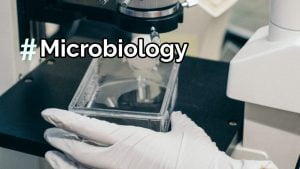
Evidently, Microbiology is another good course for any science student. It’s also very well respected in the university. After studying this course, you will be able work in universities, hospitals, medical schools, government laboratories, and almost every industry. As a Microbiologist, your job is to study microorganisms.
MUST READ: Proven ways to know an intelligent person
8. Radiography: Wikipedia postulates that radiography is an imaging technique using X-rays, gamma rays, or similar ionizing radiation and non-ionizing radiation to view the internal form of an object. Thus, radiographers are people who take images of the insides of a sick patient’s body in other to diagnose injuries or diseases. They also care of people with cancer.
Radiography is undoubtedly one of the best science courses you can study in the university. Many students don’t actually know this. In Nigeria, Radiography is seen as a course that is out of class because it is not competitive.

Well, it will surprise you to know that radiography is very lucrative and very prestigious too. As a radiographer, you can work most medical hospitals and get paid for your services. Trust me; this is one of the course you should consider studying if you still don’t know the best science course to study.
9. Medical Laboratory Science: A Medical Laboratory Scientist is someone who conducts test on patients which is then past to physicians. In many countries, this is a great course to study because Medical Laboratory Scientist are usually treated as doctors (in terms of Job security & salary), but the two fields aren’t, in any way, the same.
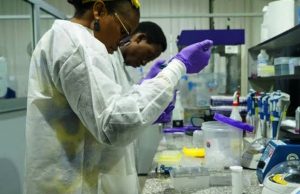
A medical laboratory scientist (MLS) can also be referred to as a clinical laboratory scientist. In most parts of the world, it takes just 6 years to complete the course in the university. During the years of study, students will also be required to go for internships where they will be thoroughly monitored while performing their job.
It is said that the job of a Medical Laboratory Scientist is very important because most of the decisions of the physician is based on it. Indeed it is a great option for students who are searching for a good and profitable science course to study.
Also see: Most lucrative commercial courses to study in the university
10. Medical rehabilitation: The last on my list of the best science courses to study in the university is Medical rehabilitation. It is another wonderful course you should consider if you really want to study the best course in the field of science. Medical rehabilitation is a branch of medicine, aimed at enhancing and restoring the functional ability and quality of life to those with physical impairments or disabilities.

Medical rehabilitation is alternatively called physiatry or physiatrics. It is a competitive course in most Nigerian university. That is to say, if you really want to study this course, you must work hard.
In most countries, graduates of Medical rehabilitation easily get job after graduating. They can work with Teaching Hospitals, Armed forces, Sports organizations and even industries.
11. Agricultural sciences: Apparently, Agriculture is one of those courses that has been looked down on by many people. The reason is because almost every graduate is expecting to be employed to do a white-collar job. This is so pathetic but it is the reality here.
Suffice to say that Agriculture is one of the most paying and lucrative field in the country. A graduate of agricultural science in Nigeria who knows what he went to school to study does not even need to be employed by anyone because the course is a job already.

Another wonderful thing about agricultural sciences is the fact that it doesn’t take too much time to study in tertiary institution. In the university, it is just 4 years. During their study, students will be trained in both the practical and theoretical aspects of the course.
According to Wikipedia, there are different facets or branches of agricultural where one can decide to go into. Some of which are: Aquafarming, Farming, Apiculture (Beekeeping), Fishery, Forestry, Ranching etc.
If you are a science student and you have an entrepreneurship mindset, I highly recommend that you choose to study this course. Trust me, you will not regret it in the long run.
Recommended: Salary of Medical Doctors in Nigeria (2023)
12. Data Management: This is another wonderful course anyone can study in school with different opportunities after graduation. It basically has to do with activities like collection of data, management and using it effectively. With the growth of technology in recent times, Data Management has become a hot cake in most universities. The interesting thing about the course is the fact that, graduates can work in almost any firm or company. Yes! There is no limit as to organisation to work for (as long as you are knowledgeable in the field).
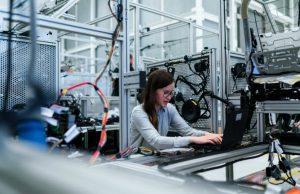
It is also important to note that not every university offer the course currently. So it will be wise to make proper enquiries before applying for it in your dream school. In most countries, the duration of Data Management is just 4 (four) years of study. After that, students will be licenced to work as a Data Management specialist.
Recommended: Most Profitable Skills To Learn In 2024
13. Biotechnology: This course is unique because it integrates knowledge of the biological sciences with business skills and industrial applications. And graduates easily get employed after graduation. In biotechnology, a living thing or a component of a living system is employed to make a useful thing. In its simplest form, biotechnology can be defined as biology-based technology that employs cellular and biomolecular processes to produce products and innovations that improve both human health and the health of the planet.
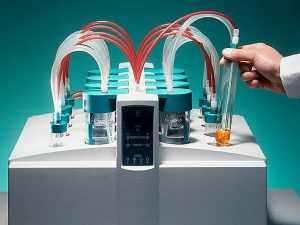
Modern biotechnology offers ground-breaking goods and technologies to treat crippling and rare diseases, lessen our impact on the environment, feed the poor, and provide more useful and clean energy as well as safer, cleaner, and more effective industrial manufacturing processes.
More than 250 biotechnology-based medical supplies and vaccinations are currently accessible to patients, many of them are for diseases that were previously incurable. More than 13.3 million farmers utilize agricultural biotechnology worldwide to boost yields and reduce damage from insects and pests.
Recommended: Advantages and disadvantages of electric vehicles
14. Architecture: This is the science or practice of creating buildings and structures for a variety of uses, including residential, educational, worshipful, entertaining, recreational, etc. Every day, a large number of structures are built throughout the nation, and architects are tasked with designing the plans so that they meet the requirements and purposes of each one.

Consequently, every time a structure is built, an opportunity for architects arises. Therefore, there are numerous work prospects for architecture graduates. An architecture firm may hire you or you may work for yourself.
15. Surveying: This course examines how to figure out where points are on the earth or in three dimensions, as well as how far apart they are from one another and what angles they are at.
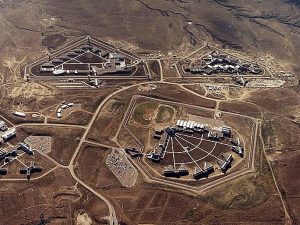
The course has a relationship with both estate management and architecture. You can choose to concentrate or major in one of the several survey-related fields; all of these fields are lucrative and in high demand both in Nigeria and elsewhere in the world.
Recommended: A day in the life of a doctor explained
Guide for Choosing A Science Course to Study In School
In as much as I have explained the best course for science students above, it is also imperative to know that not all the courses mentioned above will be suitable for you. However, below are the things that will guide you when choosing a course to study in the university.
1. Know your capability: Knowing your capability is very key when choosing a course of study in the university. Most students only consider the prestige giving to the course they want to study, but believe me, that has led so many students to doom. You should not choose a particular course because the society respects is, neither should you choose a course because your friends did so.
The most important factor you must consider when choosing a course to study, is your ability to carry that course. Do not choose because your friends did so, but choose because you believe you can carry the work load of that course. Yes, no particular course is easy, but some are more debilitating than the other. If you fail to do this, then you must prepare to get traumatized while in school.
Recommended: Major reasons why women do not participate in politics
2. Follow your passion: Slightly after considering your capability to study a particular course, is your passion for that course. This is another essential factor you should consider when choosing a course to study. Who must consider that which you love doing, and follow it up in the University by choosing a course that is related to it.
Some students may think, that their passion/talents, has nothing to do with it. But the truth is that, it really has something to do with your education. Chinua Achebe (generally known as the father of the African literature), was originally supposed to be on the medical field, but he left it, because he wanted to follow his passion.
Today, Chinua Achebe is respected throughout the whole Africa, as the father of the African literature. So you see, you should not choose, on the basics of profitability first, but let your passion play.
3. Consider your economic power: Your economic power (money) is another determining factor when choosing a course to study in the university. There are some university courses, that requires very huge amount of money before a student becomes a graduates of that course.
This money perhaps, may not be a very big problem to those who have it. But it will definitely be a great obstacle to those with less economic power (money). So, before choosing any university course, make sure your economic power will meet up to the demands of that course. This is to prevent you from dropping out later.
Also see: Best time to read and understand effectively
4. Duration of study: Your course duration may sometimes mater. Before choosing any course, it is important you consider the duration of that course. I know there are people who will not want to waste much of their time in the university, people who will want to graduate as fast as possible, for various reasons know to them.
So, if you are under this category of persons, then you must consider this factor. Even at this, it is also very important to consider your course duration before choosing any course.
5. Consider your chances of gaining admission: It also essential to also know your chance of gaining admission, if you decide to study a particular course. Especially here in Nigeria. As a student, you should know that there are some courses that are tag, “too hard to get“. And as so, it very tedious to gain admission to study those kind of courses. So before choosing any course, make sure you know how difficult or how easy, it is to gain admission to study that course.
6. Employment Opportunity: Before choosing any course to study in the University, it is important to also consider your chances of getting employed after you must have finished studying that course.
I may not mention any course in particular here because many things come into play when deciding which course has more employment rate than the other. Nonetheless, I strongly recommend that, before choosing any course, you should also consider your chances of getting employed.
MUST READ: Best commercial courses to study in the university
Wrapping up:
Those are the best science courses any student can study in the university. Remember that this article is only to help science students when deciding which course they will study in the university.
If after reading this article, you still don’t know which science course to study in the university, i enjoin you to contact me via our contact us page so I can guide you on the right course for free. Nonetheless, have at the back of your mind that the courses I mentioned above are the most lucrative and best science courses for any student.
Hope this article was helpful? Do let me know if you still have questions or contributions to make on the best science courses for science students.

Edeh Samuel Chukwuemeka, ACMC, is a lawyer and a certified mediator/conciliator in Nigeria. He is also a developer with knowledge in various programming languages. Samuel is determined to leverage his skills in technology, SEO, and legal practice to revolutionize the legal profession worldwide by creating web and mobile applications that simplify legal research. Sam is also passionate about educating and providing valuable information to people.
Please I need u to help me to choose a course that will make me a star
what are the related courses to computer sciences
I need your assistance sir
About change of course, would I be able to change my course after post utme and to any course of my choice.
After reading this article I still find it difficult to choose a course
What about Industrial chemistry pls
Is well educated
Pls how did go about the process of entering school and study computer science
These informations are really helpful.
I think I choose a course now.
I need your help sir
I’m very depressed.
I really need your help.
I still find it hard to choose a course
I still find it hard to choose a course
This is wonderful sir
This post, is an informative one i ever read, i am obsessed with your helpful thought sir but i still need more information on getting admission into a university
Thank u sir for the information
I need your help to to guide in a course that
owill help me gain admission
I think I picked two courses but I Don’t know the one to leave,and I wrote jamb this year but I Don’t like my score so I didn’t seat for post utme, though my parents forced me to seat and try but I felt it was useless so I will have to seat for it again next year,I hope I did the right thing
Yhes
Can u join the nigeria navy after u graduate as a micro biology
Please I would like to connect with you for some issues am encountering
Yes u did
Wonder
May God increase your knowledge sir
Good
Pls help me in a couple
After reading this I still find it hard to pick a course
I still find it hard to choose a course o
Pls help me
Yes
I need simple seience course
Thanks for your explaination. But please which subject are we going study from all these course that you mention.?
What about quantity surveyor?
Please I need your Assistance
Please I need your Assistance.
What about physiology
Isnt it a good course to study
I also need an assistant
The secondary school i attended they don’t offer science subjects so i went for social sciences, now am having a change of mind i want to go into medical field, what will i do? will it work? do i have to rewrite my WAEC? can i make it? i need ur help Sir
Thanks sir
I need help to choose a better course
After reading l still find it difficult to choose a course
After reading It is still difficult to choose a,course pls help sir
After reading this, i still find it difficult to choose a course sir
Thanks for guide may god bless you
please sir can you flash me, i will call you. i need to talk with you.
Please chose a course for me core math A1 , science c4 ,English B3 ,social B2 , physics C4 , chemistry E8 , general agric B3 ,E maths E8
May God bless you for the advice.
You are a great person to scholars!
My sister let’s study computer science
I need help while in secondary school ss1 ,I was moved from science class to art class which was not my choice after a test now I am done with secondary school and my dream career is an engineer I don’t know how to come about it .
I need a help when am in secondary school my choice Is to go to art and I was moved to science class now I need a course that will be benefical for me in Nigeria
please sir is science and technology education not a courses in university
Same here🥺s
Please I need Simple course for science
Still find it difficult sir i need more explanation
Please can you guide me to make a choice, I’m really confused
Although I wanted to go for medicine and surgery but my age might be an obstacle
I really need a science course that will make me travel worldwide
I also need more assistance
I need an assistant Im really confused here
I need you to help me choose a course to study I wanted to study aeronautical engineering but no university in Nigeria is studying it pls I need your help
I think I have a choice now
Thank you so much for this article
This is really helpful.
I think I now have a choice.
Thank you very much sir
This post, is an informative one i ever read, i am obsessed with your helpful thought sir but i still need your guide for my Younger sister